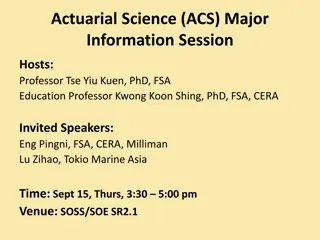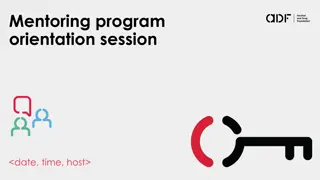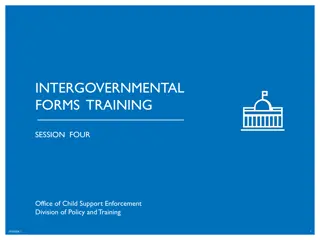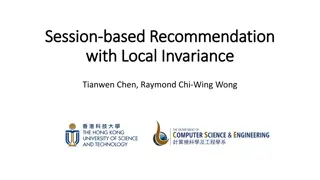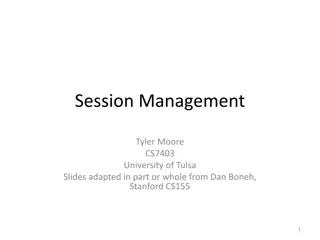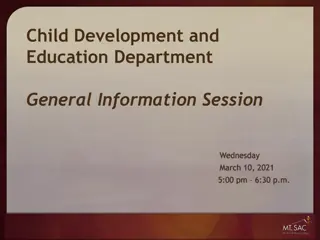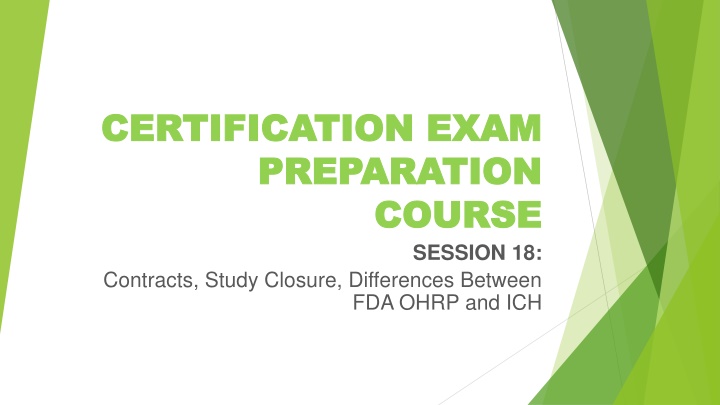
Contracts, Study Closure, and Regulatory Differences
Explore the nuances of contracts in research, the process of study closure, and variations between FDA, OHRP, and ICH regulations. Delve into the types of agreements, such as CDAs and CTAs, essential for collaborative research endeavors. Gain insights into the significance of confidentiality agreements and key elements of Clinical Trial Agreements. Uncover the components involved in the closure of a study, including essential documentation and final reporting requirements.
Download Presentation

Please find below an Image/Link to download the presentation.
The content on the website is provided AS IS for your information and personal use only. It may not be sold, licensed, or shared on other websites without obtaining consent from the author. If you encounter any issues during the download, it is possible that the publisher has removed the file from their server.
You are allowed to download the files provided on this website for personal or commercial use, subject to the condition that they are used lawfully. All files are the property of their respective owners.
The content on the website is provided AS IS for your information and personal use only. It may not be sold, licensed, or shared on other websites without obtaining consent from the author.
E N D
Presentation Transcript
CERTIFICATION EXAM CERTIFICATION EXAM PREPARATION PREPARATION COURSE COURSE SESSION 18: Contracts, Study Closure, Differences Between FDA OHRP and ICH
What is a contract? A contract is an agreement that obligates all parties to do or not do certain act(s).
Allocation of Rights Collaborative Research Agreement Consortium Agreement Data Use Agreement Interagency Cooperation Contract Material Transfer Agreement Memorandum of Understanding Non-Disclosure Agreement or Confidentiality Agreements (CDA) Service Agreement Sponsored Research Agreement or Clinical Trial Agreement (CTA) Subaward Agreement Teaming Agreement Types of Agreements or Contracts
Confidentiality Disclosure Agreement (CDA) A CDA enables involved parties to share confidential information. Usually, the first thing that happens in Industry Initiated Clinical Research.
A CTA is an agreement: negotiated between an organization and an outside entity such as a manufacturer of an investigational product Clinical Trial Agreement (CTA) mutual benefit to cooperate in the conduct of a clinical research protocol responsibilities and obligations of each of the parties in the conduct of the study addresses intellectual property and proprietary information
Parts of a Clinical Trial Agreement https://www.agreements.org/
Study Closure STUDY CLOSE- OUT VISIT ESSENTIAL DOCS- VERIFICATION RESOLUTION OF QUERIES IP QA/QC ACCOUNTABILITY IRB CLOSURE SUBMISSION- OUTCOME LETTER TO SPONSOR FINAL REPORT TO CLINICALTRIALS.GOV IF SPONSOR-INVESTIGATOR
Study Closeout Visit by the Clinical Research Associate / Monitor Data Query / Resolution Closure Essential Documents Verification Investigational Product Accountability and Disposition Investigator s Study File and Administrative Items Ensure that the investigator is aware of their responsibilities after closure
Data Query / Resolution Closure If all of the data has not been entered / verified, this must be done at the close-out visit by the CRA (Clinical Research Associate), also called the monitor. The CRC (Clinical Research Coordinator) should do this prior to the closeout visit but sometimes there is not time if the study was stopped abruptly.
Investigation Product Accountability and Disposition CRA will conduct an inventory of investigational product and supplies. The leftover product and supplies will be shipped back to the sponsor or disposed according to the protocol. A copy of the ending inventory should be given to the CRA and, also, kept on file with the investigator IP reconciliation and supplies should be conducted throughout the study and not left to the closeout visit.
Investigators Study File and Administrative Items The CRA will perform one last reconciliation of site documents to the sponsor s documents. All study documents must be present such as IRB approvals and correspondence, protocol amendments and all consent forms. After the file is complete, it can be placed in storage.
Investigators responsibilities after closure Retaining records for the time specified in the Contract Trial Agreement. Agreement that the sponsor will be notified of any FDA inspections The investigator must notify the IRB of study closure, send a closure report and send a copy to the sponsor. Enrollment summary, including the number of subjects who were enrolled, number of completions and those who did not complete the study including the reasons for discontinuation or termination. Serious adverse events and any other relevant problems or safety information. List of deviations, corrective actions and outcomes The IRB notification should occur after study site termination.
Final Reports 21 CFR 312.62 (c) Final report. An investigator shall provide the sponsor with an adequate report shortly after completion of the investigator s participation in the investigation. 21 CFR 812.150 Final report. An investigator shall, within 3 months after termination or completion of the investigation or the investigator's part of the investigation, submit a final report to the sponsor and the reviewing IRB.
Test your knowledge
The most common reason for a study to be closed at a site is: A. The study is complete B. The drug was found to be ineffective C. There were safety problems with the drug D. Lack of enrollment E. Falsification of data.
The most common reason for a study to be closed at a site is: A. The study is complete B. The drug was found to be ineffective C. There were safety problems with the drug D. Lack of enrollment E. Falsification of data.
By regulation, investigators are required to make a final study report to: A. The FDA and the sponsor. B. The sponsor and the IRB C. The institution D. The sponsor, the IRB, and the FDA E. The sponsor
By regulation, investigators are required to make a final study report to: A. The FDA and the sponsor. B. The sponsor and the IRB C. The institution D. The sponsor, the IRB, and the FDA E. The sponsor
We have a box of old study documents that have been in our storage facility for years. What should we do with it? A. If it has been three years, you may dispose of them because that is the length of time required to keep IRB records B. If it has been two years post marketing of the approval of the drug, you may dispose of them C. Ask the sponsor D. None of the above
We have a box of old study documents that have been in our storage facility for years. What should we do with it? A. If it has been three years, you may dispose of them because that is the length of time required to keep IRB records B. If it has been two years post marketing of the approval of the drug, you may dispose of them C. Ask the sponsor D. None of the above Per the regulations, A and B are the correct answers. In reality, you should always ask the sponsor before you dispose of any study records.
Differences between OHRP, FDA and ICH GCP
Test your knowledge
Prior to releasing detailed information regarding a specific study, A sponsor required the institution / investigator to sign: A. A confidentiality agreement B. The protocol signature page C. An indemnification agreement D. The Statement of the Investigator
Prior to releasing detailed information regarding a specific study, A sponsor required the institution / investigator to sign: A. A confidentiality agreement B. The protocol signature page C. An indemnification agreement D. The Statement of the Investigator
Emergency use of a test article and emergency research are circumstances covered in which of the following: a. FDA b. OHRP c. Both FDA and OHRP d. ICH e. FDA, OHRP, and ICH FDA and ICH f.
Emergency use of a test article and emergency research are circumstances covered in which of the following: a. FDA b. OHRP c. Both FDA and OHRP d. ICH e. FDA, OHRP, and ICH FDA and ICH f.
Which of the following are necessary to waive consent? a. Subject is unable to give consent b. No time or unable to contact the Legally Authorized Representative c. Life threatening condition d. No other treatment available. e. None of the above a, b, c, and d f.
Which of the following are necessary to waive consent? a. Subject is unable to give consent b. No time or unable to contact the Legally Authorized Representative c. Life threatening condition d. No other treatment available. e. None of the above a, b, c, and d f.








